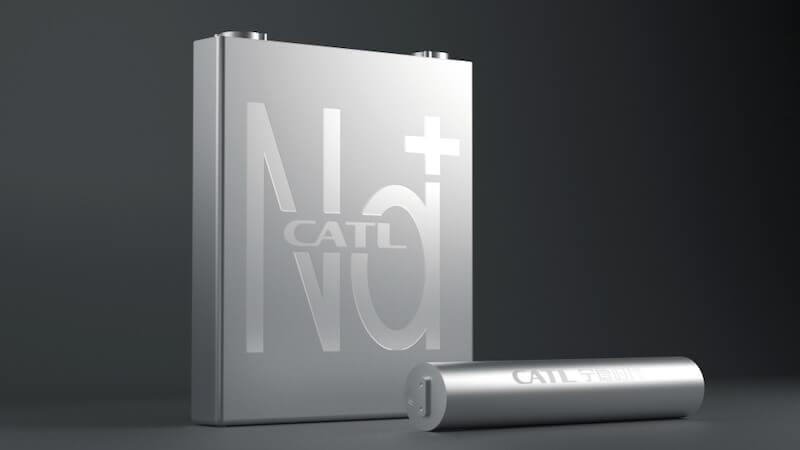
Sodium-ion batteries represent an alternative to lithium-ion batteries. They promise cost and resource advantages, but have a lower energy density. Nevertheless, technology is on the rise.
Sodium-ion batteries are close to commercialization. The technology is considered a promising alternative to lithium-ion batteries – particularly due to lower costs and the high availability of sodium. While lithium-ion batteries still dominate, sodium-ion batteries are gaining in importance.
An example is this second generation of sodium-ion batteries, which should achieve an energy density of over 200 watt hours per kilogram. Compared to the first generation with 160 watt hours per kilogram, this seems to be a significant advance.
Additionally, sodium-ion batteries function in extremely cold environments down to minus 40 degrees Celsius and offer fast charging capabilities in temperatures as low as minus 30 degrees Celsius. These properties make them particularly attractive for use in cold regions and in electric vehicles.
The advantages of sodium-ion batteries
A key advantage of sodium-ion technology lies in its use of resources. Because sodium is abundant in the earth’s crust. The extraction and processing are cheaper than with lithium. Sodium-ion batteries also use aluminum for the anode current collector instead of expensive copper.
This further reduces costs. The dependence on critical materials is therefore significantly lower. However, compared to lithium-ion batteries, the lower energy density of sodium-ion batteries poses a challenge.
Nevertheless, developers have introduced hybrid solutions such as the “Freevoy” battery pack. It combines sodium and lithium ions to take advantage of both technologies. These hybrids offer a range of over 400 kilometers for electric cars and enable more stable performance in extreme conditions.
Electrolyte optimization and future prospects
Another advance is the improvement of the electrolytes, which are intended to increase the service life and efficiency of sodium-ion batteries. Special electrolyte additives can minimize undesirable side reactions and create more stable boundary layers between electrolyte and electrodes.
These advances could make sodium-ion batteries more competitive and extend their lifespan. The developments show that the technology can be a sustainable and cost-effective alternative to lithium. The technology could play a key role, particularly in cold regions and in applications that do not require extremely high energy density.
Also interesting:
- Graphite trick: New electric car battery can be charged in 15 minutes
- Heat battery: Electric stones heat air or gas to almost 2,000 degrees
- Non-toxic and non-flammable: researchers are developing new types of batteries
- Solar system turns salt water into drinking water – without batteries
The article Lithium alternative: How do sodium-ion batteries work? by Felix Baumann first appeared on BASIC thinking. Follow us too Facebook, Twitter and Instagram.
As a tech industry expert, I believe that the development of sodium-ion batteries as an alternative to lithium-ion batteries is a promising step towards creating more sustainable and affordable energy storage solutions.
Sodium-ion batteries work in a similar way to lithium-ion batteries, with the main difference being the use of sodium ions instead of lithium ions as the charge carriers. When the battery is being charged, sodium ions are extracted from the positive electrode (cathode) and move through an electrolyte to the negative electrode (anode), where they are stored.
During discharge, the opposite process occurs, with the sodium ions moving back to the cathode, releasing energy in the process. The key advantage of sodium-ion batteries is that sodium is more abundant and less expensive than lithium, making these batteries potentially more cost-effective and environmentally friendly.
However, there are still challenges to be addressed in terms of the performance and longevity of sodium-ion batteries compared to lithium-ion batteries. Research and development efforts are ongoing to improve the energy density, cycle life, and safety of sodium-ion batteries to make them a viable alternative in various applications, including electric vehicles and renewable energy storage.
Overall, I am optimistic about the potential of sodium-ion batteries to complement and possibly even replace lithium-ion batteries in the future, providing a more sustainable and accessible energy storage solution for a wide range of industries.
Credits